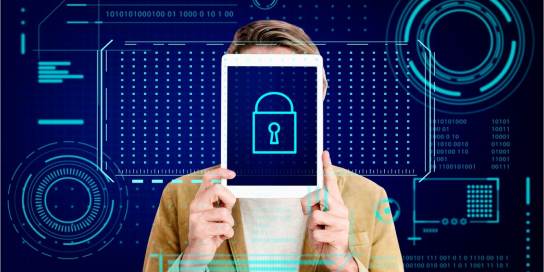These technologies can review tons of data sets to find patterns and identify anomalies that do not align with the set security measures. They can be set to flag and prevent potential threats, allowing security teams to review the flagged actions and determine whether they are within the set organizational parameters. For example, a bank can flag a transaction if it does not align with the customer’s historical transactions. Once a customer proves their identity and reassures the bank that they have initiated the transaction, the bank can allow the money to move from their account.
Technological advancements have paved the way for simplified access to online resources. People can work from home, communicate with loved ones, store data securely, enjoy entertainment on the go, and bank through digital platforms. While these opportunities have several benefits, they are subject to data and online security issues. After all, without proper measures to secure digital data from unauthorized access, it’s easy for third parties to disclose, disrupt, modify, or destroy invaluable information to the detriment of online users. That’s why data and online security are integral for any entity with an online presence.
What is Data Security
Online transactions rely on digital data; for example, a bank can only offer cash transfer services if its system has access to and can process customers’ data. Unfortunately, the same data can be subject to breaches that can result in reputational and financial losses. Data security focuses on safeguarding digital data throughout its lifecycle, i.e., from creation to use to transmission to storage. It does this using measures such as masking the data, encrypting it, and providing strict access controls that lock out anyone who does not have authorization to view or use the data.
What is Cyber Security

While data security focuses on protecting datasets, cyber security is more all-encompassing as it extends to digital systems and networks. It identifies and prevents digital data threats through measures such as access codes, identity verification, and quality data maintenance. For example, a social media platform may implement two-factor authentication that requires users to enter unique access codes sent to their phones or email addresses in addition to their registered passwords. Such measures enable people to secure their data and keep unauthorized users away from such valuable information. Data security organizations (PECR) and cybersecurity organizations (CISA) play crucial roles in implementing and maintaining these measures.
The Top Data and Online Security Trends
Information security is a dynamic field that is subject to varying opportunities and risks with each technological development. As a result, stakeholders rely on emerging technologies to keep up with the changing scope, as follows:
AI and Machine Learning
Artificial intelligence (AI) and machine learning (ML) have taken the technological world by storm thanks to their amazing capacity to analyze scores of data sets and make meaning of the data. In the information security realm, these technologies have proven helpful in the following ways:
Since AI and ML can learn from past and present data, they are effective in determining and preventing future security threats. Take the example of online fraud. Scams often pop up fast and affect many organizations before the data becomes available to the public. These technologies can collect data quickly, thus enabling them to start identifying and stopping any actions that mimic these security breaches even before the organization is aware of their existence.
Some processes are quite mundane and take up human resources that could be better spent on more pressing issues. A good example is false positives. These technologies can handle such alerts with ease, enabling an organization to focus more on strategic cyber threat management. The best part about these technologies is that they eliminate the human errors that could result in system vulnerabilities. Of course, they still rely on human effort to make objective decisions, but their lack of subjectivity makes them reliable in spotting anomalies that a human may have missed.
IoT Security
IoT (Internet of Things) has effectively merged the physical and digital realms which has eased the sharing of data over the internet or other communication networks. Of course, this comes with security risks that IoT security addresses in the following ways:
a. Increased monitoring: The interconnectedness of devices comes with the advantage of easier monitoring. IoT devices can monitor their environments and flag anything that seems off, enabling users to look into any unusual activities.
b. Security protocols: With people sharing data easily, privacy is often a concern. IoT relies on several security protocols, such as DDoS protection, to safeguard people’s data. Moreover, it hinges on physical systems security to ensure that its physical systems are not at risk of intrusions. IoT devices also feature threat intelligence software that allows them to spot potential threats and report them so that they can be thwarted before they cause harm.
Quantum Computing
The speed of quantum computing is so great that this technology has been positioned to replace classical algorithms over time. More importantly, it has shown great promise in addressing cybersecurity, as follows:

★ It provides secure cryptographic keys: Encrypting data has always been key to preventing unauthorized access. With quantum computing, users can enjoy access to true random number generation, which further enhances the security of data in transit. What’s more, this technology paves the way for quantum key distribution, which allows users to encrypt and decrypt their messages using quantum mechanics. Unlike current encryption methods, these encryption methods cannot be intercepted without alerting the sender and recipient.
★ It sets the pace for new algorithms: While previous algorithms have been fast, they are not a match for quantum computing, whose cryptographic algorithms can secure data from quantum attacks. But that’s not all. They can also analyze data from different sources and predict possible threats at incredible speeds, thus safeguarding encrypted data in the long term. While this technology has attracted considerable interest, it is still in its developmental stages, and some experts have raised concerns regarding its impact on current encryption methods.
Blockchain
Blockchain technology has already made waves for its role in virtual currencies. However, it turns out that this technology can also be beneficial in the information security space. How?
The decentralized nature of this technology allows it to distribute data across various computer networks. As such, cybercriminals cannot attack the entire system as it lacks a specific point of failure, making it less vulnerable to systemic attacks.
All transactions are recorded, and participants have access to these entries. Thus, it is easy for someone to follow up on their data and who has accessed it. But that’s not all. This technology also boasts cryptographic security measures that prevent others from altering data without getting a network consensus.
Fraud takes place because cybercriminals can change data while in transit. Blockchain technology eliminates this security gap with its immutability. Once a transaction has been recorded, the only people who can change it are those directly involved in the agreement. Moreover, one person cannot change it without the other’s consent. Cybercriminals would thus have to attack several points of the transaction to make a change in the network.
The security protocols in blockchain are multi-pronged. First, it uses smart contracts that automatically block out any unauthorized access. Secondly, it has a secure verification system to identify and authenticate users. Thirdly, it uses connected blocks to ensure that any unauthorized changes show up easily, enabling users to act within the network to protect their data.
This technology is thus not only practical for digital currency transactions but also for data processing. While it may not prevent all attacks, its security protocols are enough to address most of the existing and emerging threats.
Trust Security
Zero trust security is a framework that uses a “never trust, always verify” approach when dealing with internal and external processes. Thanks to this, it offers the following benefits:
This technology assumes that internal and external processes could be cyberattacks. As such, it treats all transactions like a potential threat and does not okay any process until it has been verified as one within its set parameters. As such, data is only available to people who have passed the authorization process, which reduces the risk of cyberattacks. What’s more, people who gain access to the system cannot move laterally which ensures that sensitive data remains out of reach of unauthorized users even if they may have some rights within the system.
Locking people out of sensitive data makes this technology useful in organizations that require high segmentation. It also makes it easy to follow the data use policies set out in different regions, as users can know who can access their data. Moreover, this technology is dynamic and changes access controls based on a user’s behavior and risk profile, which reduces insider threats.
Conclusion
With technological advances, security threats have increased, prompting people to look into newer ways to identify and address these cyberattacks. Presently, security protocols like AI and ML integration, quantum computing, and blockchain have proven effective in protecting digital environments. Since the practicality and benefits of these methods differ, it is advisable to assess one’s security threats before implementing a protocol.







